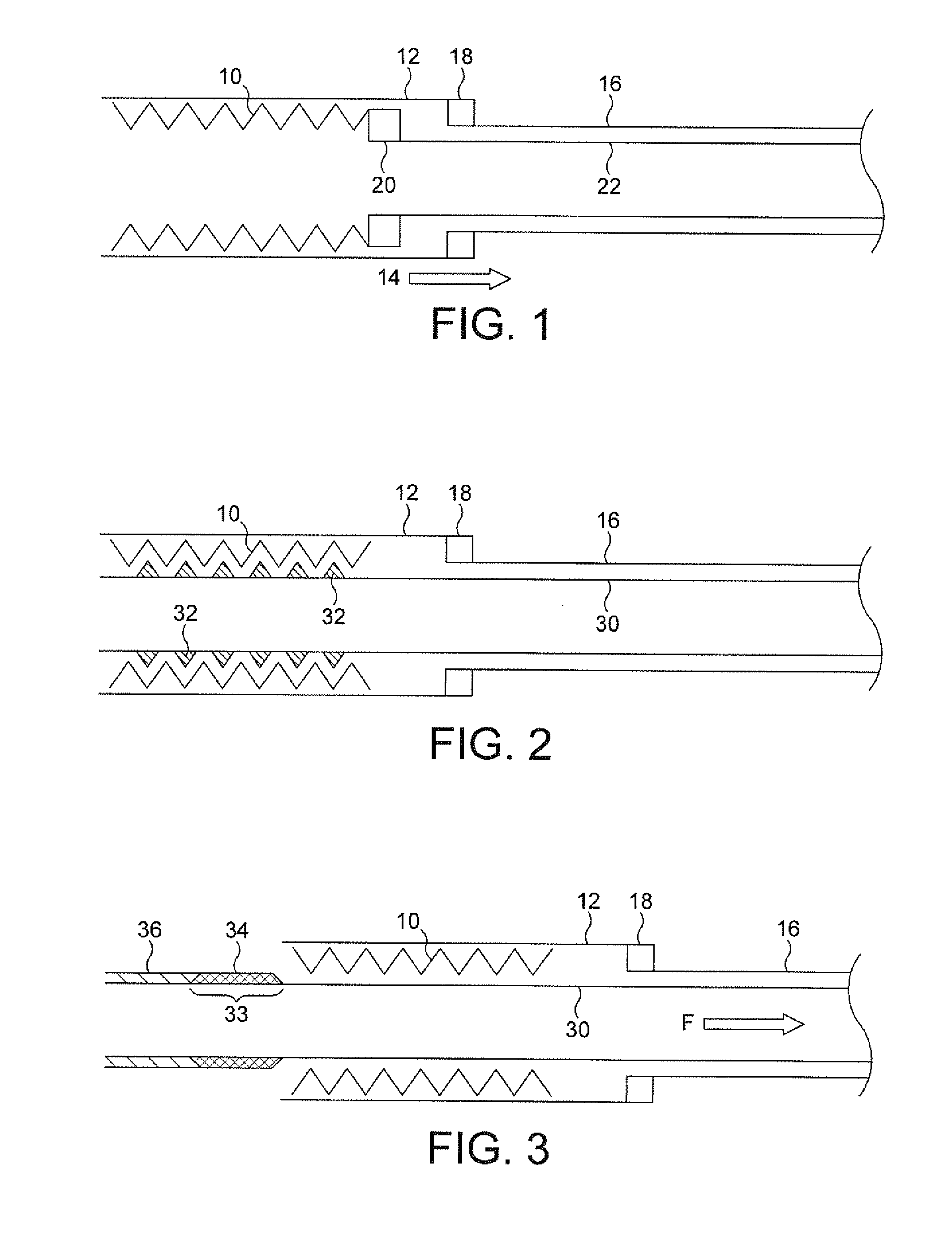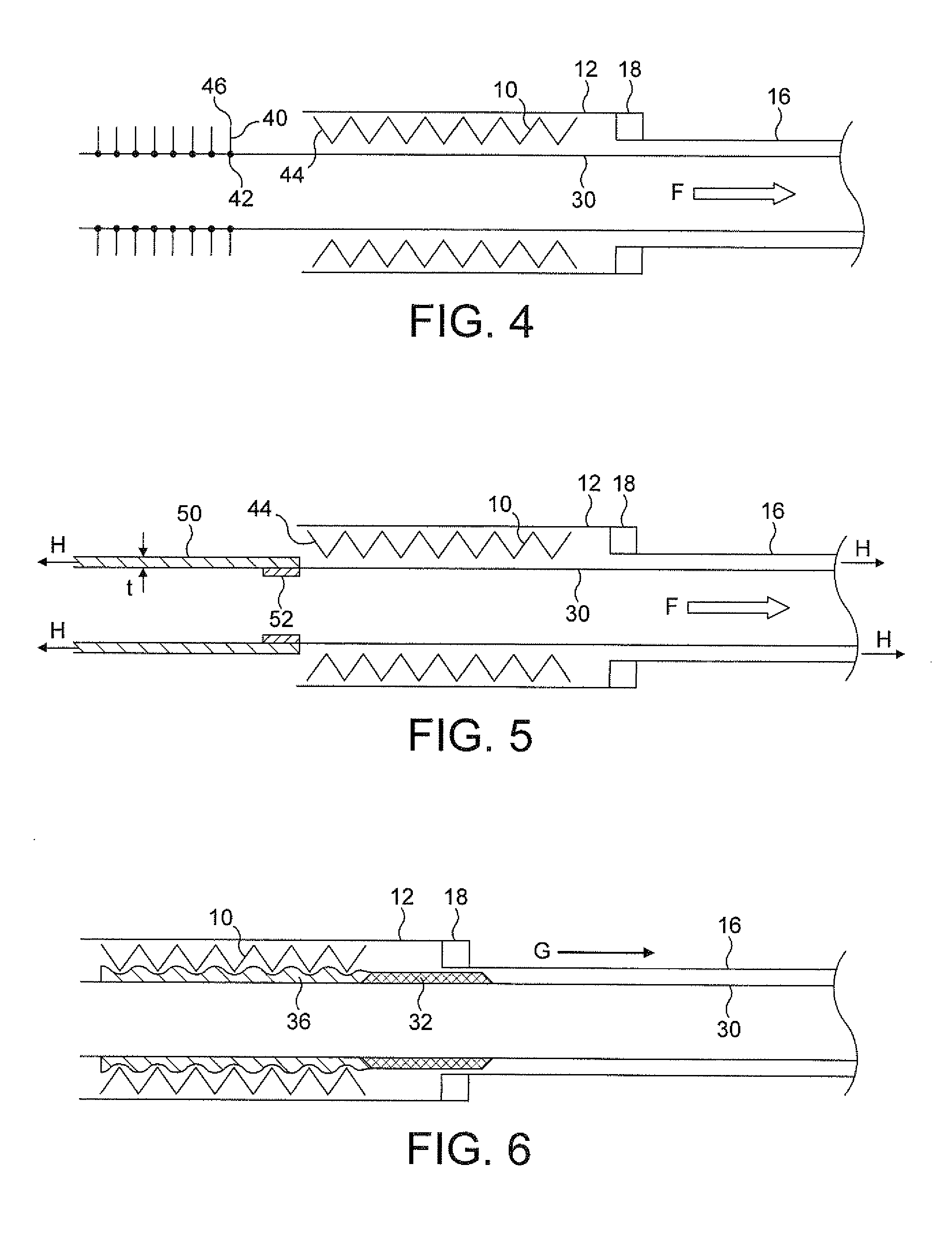Transluminal delivery system
a technology of transluminal and delivery system, which is applied in the direction of blood vessels, prostheses, manufacturing tools, etc., can solve the problems of incompatibility of design objectives and engineering demands on the delivery system, and achieve the effect of good column strength and high column strength
- Summary
- Abstract
- Description
- Claims
- Application Information
AI Technical Summary
Benefits of technology
Problems solved by technology
Method used
Image
Examples
Embodiment Construction
[0017]The schematic drawing of FIG. 1 shows a stent 10 that has been radially crimped to a small diameter for advancement along a lumen to a stenting site within the body of a patient. To release the stent into the bodily lumen a sheath 12 that surrounds the stent and confines it radially is pulled back proximally in the direction of arrow 14 using a pulling device 16 such as a pull tube or pull wire that runs all the way back to the hand unit (not shown) at the proximal end of the transluminal catheter delivery system. Typically, there is some sort of bond, such as with a collar 18, that connects the pulling element 16 with the sheath 12 that surrounds the stent.
[0018]Absent any other structure, then any proximal movement of the sheath 12 will carry the stent with it because the stent is a self-expanding stent and so is continuously pressing on the luminal surface of the sheath 12. To stop the stent 10 moving proximally with the sheath 12, it has been conventional to employ an annu...
PUM
| Property | Measurement | Unit |
|---|---|---|
| lengths | aaaaa | aaaaa |
| length | aaaaa | aaaaa |
| length | aaaaa | aaaaa |
Abstract
Description
Claims
Application Information
 Login to View More
Login to View More - R&D
- Intellectual Property
- Life Sciences
- Materials
- Tech Scout
- Unparalleled Data Quality
- Higher Quality Content
- 60% Fewer Hallucinations
Browse by: Latest US Patents, China's latest patents, Technical Efficacy Thesaurus, Application Domain, Technology Topic, Popular Technical Reports.
© 2025 PatSnap. All rights reserved.Legal|Privacy policy|Modern Slavery Act Transparency Statement|Sitemap|About US| Contact US: help@patsnap.com



